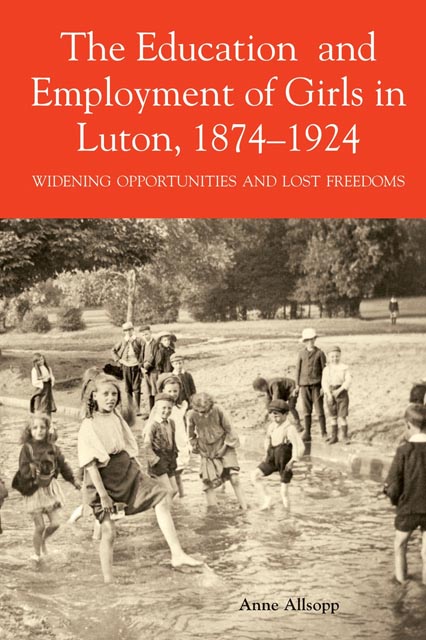Book contents
- Frontmatter
- Contents
- List of Illustrations
- List of Tables
- Dedication
- Acknowledgements
- Abbreviations
- Introduction
- Chapter One Luton: Scientiae et labori detur
- Chapter Two Further Perspectives Concerning Employment Patterns for Women
- Chapter Three Sunday Schools
- Chapter Four Education in the Time of the School Board
- Chapter Five Teaching: An Alternative Occupation
- Chapter Six Teacher Training and the Education of Students Aged Over Fourteen Under Bedfordshire County Council
- Chapter Seven Elementary Education 1903–1924
- Chapter Eight Rural Schools
- Chapter Nine Learning and Living
- Chapter Ten Secondary Education for Girls
- Conclusion
- Appendix
- Bibliography
- Index
Chapter Three - Sunday Schools
Published online by Cambridge University Press: 03 August 2023
- Frontmatter
- Contents
- List of Illustrations
- List of Tables
- Dedication
- Acknowledgements
- Abbreviations
- Introduction
- Chapter One Luton: Scientiae et labori detur
- Chapter Two Further Perspectives Concerning Employment Patterns for Women
- Chapter Three Sunday Schools
- Chapter Four Education in the Time of the School Board
- Chapter Five Teaching: An Alternative Occupation
- Chapter Six Teacher Training and the Education of Students Aged Over Fourteen Under Bedfordshire County Council
- Chapter Seven Elementary Education 1903–1924
- Chapter Eight Rural Schools
- Chapter Nine Learning and Living
- Chapter Ten Secondary Education for Girls
- Conclusion
- Appendix
- Bibliography
- Index
Summary
Growth of the Sunday School Movement
Sunday schools played a significant part in the schooling of children in Luton. Before compulsory education, which came into force in Luton in 1874, Sunday schools were often the only places where children could learn to read and write. Later they became the focus of much of the social life of the town. The schools were so important that they have been considered here, even though some of the material relates to the years that preceded the main focus of this book. Reference has also been made to some other Sunday schools in Bedfordshire in order to present a fuller picture.
Dr Kay Shuttleworth, the first Secretary of the Committee of the Privy Council (precursor of the Ministry of Education), which was set up in 1839 ‘for the consideration of all matters affecting the education of the people’, believed that Sunday schools were the ‘root from which sprang our system of day schools’. This belief was shared by Wesleyans in Luton who claimed that their first school was ‘the harbinger not only of the fine schools that now are our pride in Chapel Street, Waller Street, and elsewhere but also a great stimulus to the educational movement in general’. It was also said that ‘the Sunday School Movement may claim some credit for the splendid Elementary and Secondary Schools of the town’. In order to support this, names are given of men who were active both in Sunday and elementary schools: Mr Henry Blundell, Mr Gustavus Jordan and Mr George Warren, JP, CA.
Robert Raikes of Gloucester, a publisher, has generally been credited with the introduction of Sunday schools although there are in fact records of other schools which existed before 1780, which is when Raikes began to popularize the idea. Raikes, having observed the lawlessness of children running wild on Sundays, believed that by educating the children he might find a way to turn them from crime. ‘He saw that in many cases their misdemeanours were the result of ignorance alone, and that if instruction and enlightenment were not provided, many more people would be in the same pitiful state’.
- Type
- Chapter
- Information
- The Education and Employment of Girls in Luton, 1874-1924Widening Opportunities and Lost Freedoms, pp. 46 - 61Publisher: Boydell & BrewerFirst published in: 2023

